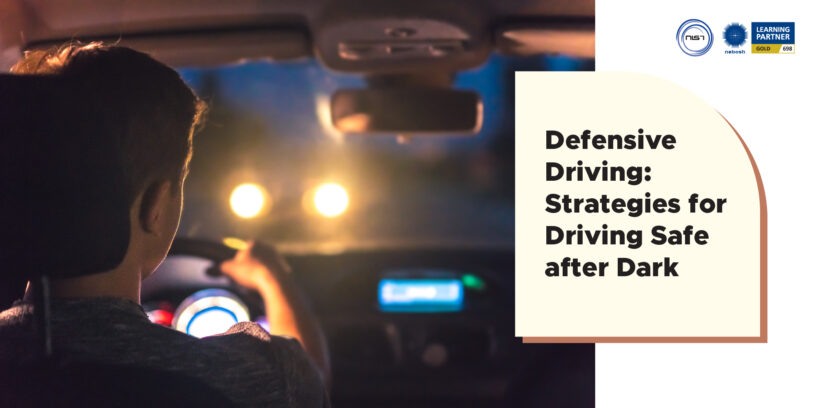Introduction
Driving after dark presents a unique set of challenges that require a different approach compared to daytime driving. Reduced visibility, potential fatigue, and increased risks make night-time driving more hazardous. However, with the right strategies and precautions, you can stay safe on the road even after the sun goes down. In this blog, we will explore key night-time defensive driving strategies to help you navigate the dark hours safely.
Ensure Proper Vehicle Lighting: The foundation of safe night-time driving is your vehicle’s lighting. Before hitting the road, check that all your lights are functioning correctly, including headlights, taillights, brake lights, and turn signals. Keep your headlights on at all times, even during twilight, to increase your visibility to other drivers.
Adjust Your Speed: Reduced visibility at night means it’s essential to slow down. Drive at a speed that allows you to stop within the distance you can see ahead. Avoid the temptation to exceed speed limits, especially in unfamiliar or poorly lit areas.
Stay Focused and Alert: Night-time driving can be tiring, leading to decreased alertness. To combat this, ensure you are well-rested before starting on a journey. Avoid driving if you’re feeling excessively fatigued. Engage your mind by staying focused on the road and your surroundings.
Reduce Glare: Glare from oncoming headlights or streetlights can be distracting and reduce your visibility. To mitigate this, adjust your rear-view mirror to the night setting to reduce glare from vehicles behind you. Additionally, avoid looking directly into oncoming headlights; instead, focus on the right side of your lane.
Increase Following Distance: Maintaining a safe following distance is crucial, especially at night. You need more time to react to unexpected situations in low-light conditions. The general rule of thumb is to maintain a distance of at least three seconds from the vehicle in front of you. This distance should increase in adverse weather.
Use High Beams Wisely: High beams can significantly improve your visibility on dark roads, but use them judiciously. Only switch to high beams on unlit roads or when there is no oncoming traffic. Remember to dim your lights when approaching other vehicles to prevent blinding the other driver.
Watch Out for Pedestrians and Animals: Night-time is when pedestrians, cyclists, and animals can be harder to spot. Be vigilant, especially in residential areas, and watch for reflective clothing, bicycle lights, and the glint of animal eyes in your headlights.
Plan your Route: Before heading out, plan your route and familiarize yourself with the road conditions. Consider using GPS navigation systems that offer real-time traffic updates and alternative routes to avoid congestion and potentially unsafe areas.
Be Mindful of Your Vision: Ensure that your vision is up to par for night-time driving. Have your eyesight checked regularly and wear prescription glasses or contact lenses if needed. Clean your windshield inside and out to reduce glare and improve visibility.
Stay Prepared: Carry a roadside emergency kit that includes items like a flashlight, blankets, a first aid kit, and basic tools. In the event of a breakdown or emergency, these supplies can make a significant difference.
Conclusion
Night-time driving demands heightened attention and a different set of defensive driving strategies. By following these tips, you can significantly reduce the risks associated with driving after dark. Remember that safety should always be your top priority, and it’s better to arrive at your destination a little later than to compromise on safety. Stay vigilant, be cautious, and make night-time driving a safer experience for you and others on the road.
Defensive Driving Training @ NIST Global
NIST Global delivers defensive driving courses that hold certification from the National Safety Council, USA. These courses are designed to boost individual defensive driving skills and facilitate certification attainment. Moreover, we present tailor-made defensive driving training options to address the specific requirements of organizations.
Should you require more details on our defensive driving training, do not hesitate to reach out to our customer service team at +91 8754465588 or via email at info@nistglobal.com. We are ready to provide any assistance you may need!














Leave a Reply